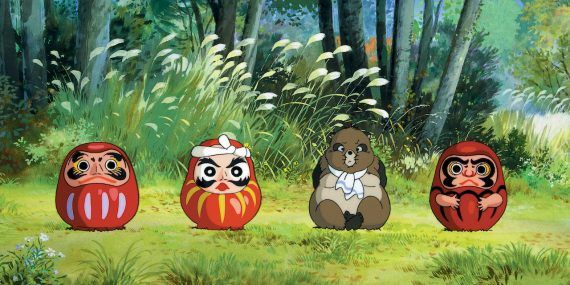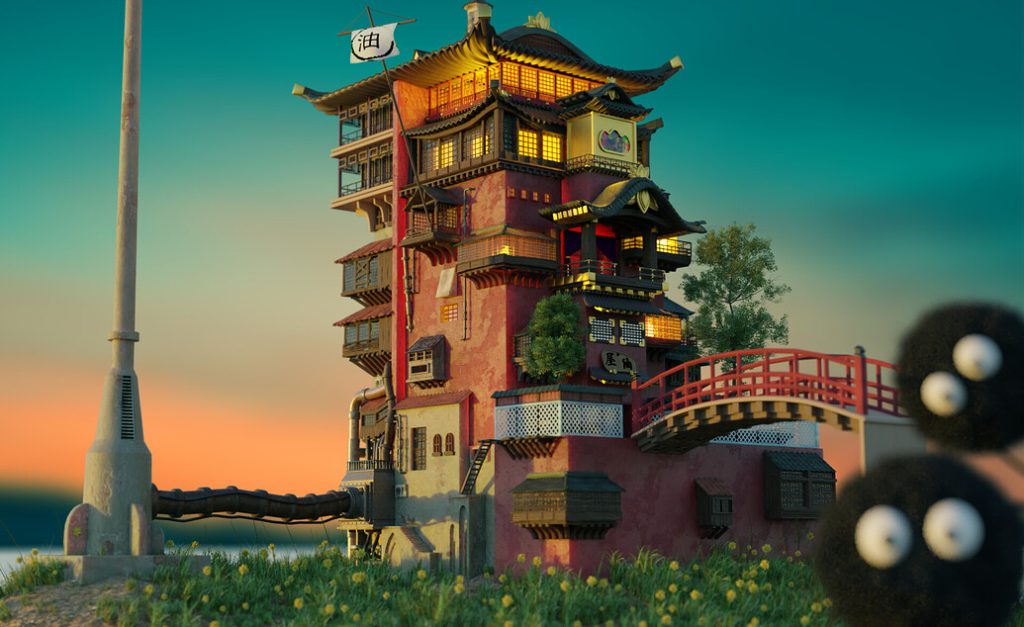Studio Ghibli is widely celebrated for its breathtaking animation, heartfelt storytelling, and deep emotional resonance. Yet beyond the fantasy worlds and lovable characters lies something even more profound—a reverent portrayal of traditional Japanese culture, seamlessly interwoven into nearly every film. From Shinto beliefs and seasonal festivals to rural life and family dynamics, Ghibli films are more than entertainment—they’re cultural time capsules.
In this article, we’ll explore how Studio Ghibli reflects and celebrates traditional Japanese culture, with special attention to Shintoism, folklore, nature worship, customs, and the subtle wisdom of everyday life. Whether you’re a longtime fan or a cultural enthusiast, this deep dive reveals how Ghibli captures the true soul of Japan.
🏯 Shintoism – The Spiritual Backbone of Ghibli Worlds
One of the most prevalent elements in Ghibli films is Shintoism, Japan’s indigenous spirituality. Rooted in animism and nature worship, Shintoism teaches that everything in the natural world—trees, rivers, animals, and even objects—possesses a spirit (kami).
Examples in Ghibli:
-
Spirited Away (Sen to Chihiro no Kamikakushi): The bathhouse serves spirits and deities, clearly influenced by Shinto purification rituals. Characters like No-Face, Haku (a river spirit), and the Stink Spirit all represent kami.
-
Princess Mononoke (Mononoke Hime): Features large forest gods and sacred animals, embodying the spiritual balance between humans and nature.
-
My Neighbor Totoro: Totoro resembles a forest kami, worshipped by the children through small rituals, such as bowing at the tree and offering acorns.
Ghibli doesn’t portray religion dogmatically but embeds these beliefs subtly, allowing audiences to feel the sacredness of everyday life.
🍃 Harmony with Nature – A Core Cultural Value
A deep respect for nature is central to both Shintoism and traditional Japanese philosophy. Ghibli films consistently portray the relationship between humans and the environment, warning against industrialization and ecological imbalance.
Cultural Reflections:
-
The satoyama lifestyle (living in harmony with nearby forests and farmland) is visible in Totoro’s idyllic countryside setting.
-
Pom Poko (by Studio Ghibli co-founder Isao Takahata) shows tanuki (raccoon dogs) fighting to protect their forest from urban sprawl.
-
Nausicaä of the Valley of the Wind offers a post-apocalyptic view of environmental collapse and regeneration through compassion and understanding.
These themes mirror the Japanese value of coexistence with nature, a concept taught from a young age through seasonal festivals and agricultural traditions.
🎎 Japanese Folklore, Yōkai, and Mythical Creatures
Japanese folklore is rich with yōkai (supernatural beings), obake (ghosts), and mysterious forest dwellers, many of which inspire Ghibli’s characters.
Folklore Influences:
-
Spirited Away: Many spirits in the bathhouse resemble yōkai such as kappa, tengu, and faceless ghosts.
-
My Neighbor Totoro: Totoro’s design blends elements of owl, tanuki, and forest spirits.
-
The Cat Returns and Whisper of the Heart: Include mythical talking cats, portals to other worlds, and enchanted objects, aligning with Japan’s rich storytelling tradition.
This folklore roots Ghibli films deeply in cultural imagination, connecting modern viewers with ancient beliefs and superstitions.
🧹 Traditional Customs and Daily Life
Beyond mythology and spirituality, Ghibli shines in its depiction of ordinary Japanese life, customs, and rituals.
Cultural Details in Ghibli Films:
-
Family meals: Scenes like the bento box in My Neighbor Totoro or dinner at Chihiro’s new home offer realistic portrayals of Japanese food culture.
-
Household structure: Many Ghibli homes have tatami mats, sliding doors (shōji), futons, and genkan (shoe-removal areas).
-
Seasonal traditions: Only Yesterday and From Up on Poppy Hill showcase practices like school festivals, farming seasons, and calligraphy writing.
These small moments reflect the beauty of mundane life, encouraging appreciation of everyday traditions and social etiquette.
🧘 Ma – The Japanese Aesthetic of Stillness and Space
One of the lesser-known but profound cultural values expressed in Ghibli films is “ma” (間)—the concept of emptiness, pause, and silence. It allows characters (and viewers) to breathe, reflect, and feel the world around them.
Hayao Miyazaki once said: “If you just have non-stop action with no breathing space at all, it’s just busyness. But if you take a moment, then the tension builds, and you get a sense of scale.”
“Ma” in Action: Long, quiet shots of nature or characters thinking silently; Focus on wind rustling leaves, or a teacup being placed gently on a table; No over-explaining—audiences are trusted to feel the moment.
This aligns with Zen influence and wabi-sabi aesthetics, which prize imperfection, stillness, and natural flow.
🎐 Japanese Architecture and Design
Ghibli’s background art is meticulously crafted, often showcasing traditional Japanese architecture and settings.
Examples:
-
Satsuki and Mei’s house in Totoro: A classic wooden Japanese countryside home with a tiled roof and veranda.
-
The bathhouse in Spirited Away: A fusion of Edo-period bathhouses and Shinto shrines, richly detailed and symbolic.
-
Seaside towns and winding alleys in Kiki’s Delivery Service and Whisper of the Heart mix Western and Japanese aesthetics, reflecting the Meiji period’s influence.
These visual cues help situate Ghibli’s fantasy within real cultural history, offering a visual treat for those who love Japan’s heritage.
🎌 Why This Matters: Ghibli as a Cultural Bridge
Studio Ghibli does more than entertain—it educates global audiences about Japanese values in a natural, immersive way. Through richly layered narratives, it introduces concepts like:
-
Spiritual purity
-
Respect for elders
-
Community life
-
Minimalism and mindfulness
For international viewers, Ghibli becomes a gentle bridge to Japanese tradition, inspiring deeper interest in the country’s culture, history, and philosophy.
🌟 Conclusion: Ghibli as a Living Expression of Japan
Studio Ghibli’s films are magical not only because of their stories, but because they are rooted in something real—the spiritual, cultural, and historical essence of Japan. From the sacred forests of Shintoism to the quiet rituals of daily life, every frame is infused with meaning.
Whether you’re watching Totoro sway in the wind, Chihiro bowing before a spirit, or a character pausing to sip tea, you’re witnessing Japan’s cultural heartbeat, animated with care.
To truly appreciate Ghibli is to understand that its worlds, while fantastical, are built on centuries of tradition—and that makes the magic all the more powerful.




